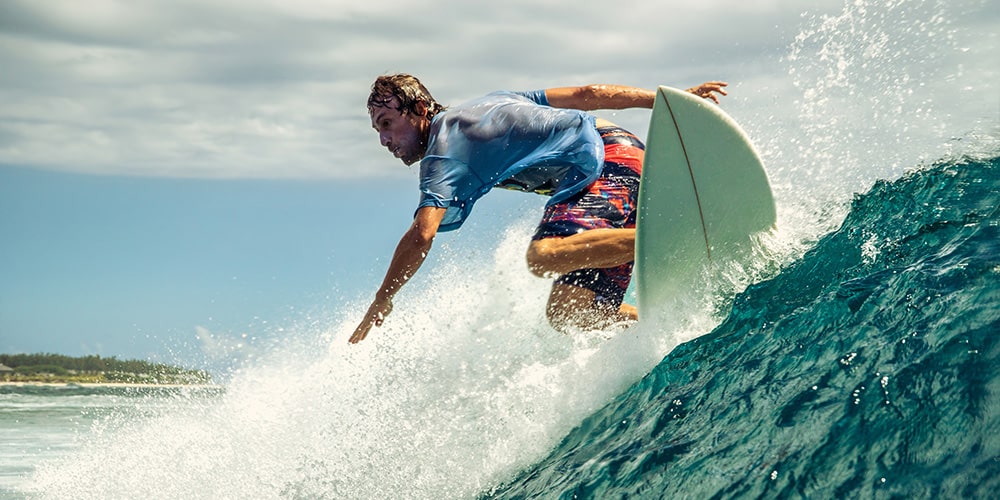Make an Appointment
Why Consider Swimming for Back Pain
So, you’re dealing with some nagging lower back pain? You’ve probably already tried giving it some rest, changing medications, changing your diet, ignoring it, and a thousand other things — none of which have helped.
But, have you tried swimming?
Lower back pain affects up to 80% of Australians at some point in their lives and is a leading cause of activity limitation and work absence GQ. While land-based therapies (e.g. Pilates, yoga) offer proven benefits, the unique environment of water provides buoyancy, hydrostatic pressure and uniform resistance - allowing safe mobilisation, pain reduction and muscle strengthening without spinal overloading. Swimming or aquatic exercise can therefore be an ideal complement to traditional rehabilitation programs

Should You Swim if You Have Lower Back Pain?
Yes, under the right conditions.
- Load Reduction: Buoyancy supports up to 90% of body weight, substantially off-loading spinal compressive forces. ep360.com.au
- Gentle Mobilisation: Water’s warmth and gentle resistance encourage movement through a fuller range of motion, reducing stiffness.
- Pain Modulation: Immersion in warm water relaxes muscle tone, triggers endorphin release and can decrease nociceptive input.
- Psychological Benefits: The meditative rhythm of swimming often improves mood and adherence compared to gym-based exercises.
Tip: Always consult your GP or physiotherapist before beginning any new exercise, especially if you have a specific spinal pathology or recent injury.
Is swimming good for lower back pain?
Yes, swimming can be very effective in treating lower back pain.
Swimming is an excellent form of low-impact aerobic conditioning that is easy on the back and spine. Unlike running or other forms of aerobic exercise, with swimming, there is practically no impact on the spine.
Research has shown that swimming for lower back pain can help patients increase their mobility, reduce pain and improve their overall quality of life. The Spine Journal examined how swimming exercises could help with chronic back pain and found that water exercises improved disabilities and quality of life better than other types of exercise performed outside of the water.
Another systematic review - Aquatic Exercises in the Treatment of Low Back Pain also concluded that "Aquatic exercise can statistically significantly reduce pain and increase physical function in patients with low back pain:".
Several other studies have also shown swimming to be more effective for improving symptoms of arthritis and fibromyalgia patients than other forms of exercise.
If swimming sounds a bit daunting for you, try starting with water walking or water aerobics. Walking around the pool still allows you to reap benefits for your back pain. And water aerobics is perfect for working on the cardio aspect needed to build muscle strength and works a variety of muscles while building your flexibility.
If you struggle with lower back pain, perhaps the last thing on your mind is getting some exercise. However, too much rest can cause the muscles that support the lower back to atrophy. And when these muscles weaken, they cannot stabilize the spine properly, which can have a negative impact.
As with any new exercise program, it’s important to talk to your doctor and/or physiotherapist prior to beginning. You’ll want to make sure that any exercise you’re performing is appropriate for your unique situation and your lower back pain.
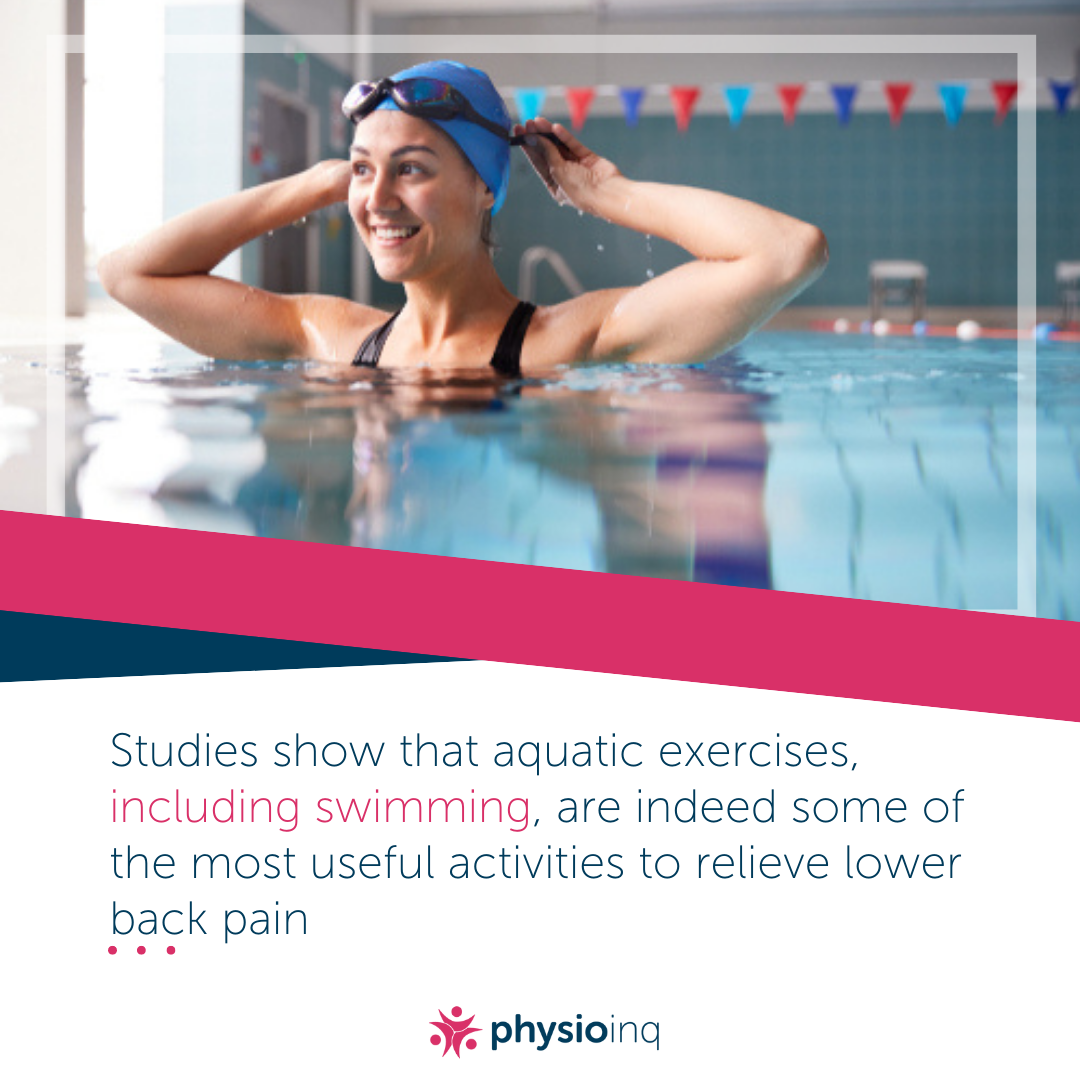
Is Swimming the Best Exercise for Lower Back Pain?
While “best” depends on individual needs, swimming ranks highly:
- Low Impact vs. Land-Based: Unlike running or weight training, swimming minimises impact-related microtrauma to vertebrae and discs.
- Full-Body Engagement: Combines cardiovascular conditioning with activation of core, back and postural muscles in one session.
- Evidence of Superiority: A randomised trial in The Spine Journal found aquatic exercise yielded greater disability reduction and quality-of-life improvements than matched land-based protocols. Physio Inq
However, swimming should complement, not replace, targeted land exercises that address specific strength or flexibility deficits identified by your therapist.
What Swimming Style Is Best for Lower Back Pain Relief?
The best swimming strokes if you have lower back pain are the backstroke and the breaststroke. The butterfly stroke… well, it isn’t.
Your choice of strokes will either help or harm your back, so it’s important to stick to strokes that will protect your spine and keep lower back pain in check. Also, being able to perform a stroke in a controlled way can prevent further injury and keep aches at bay.
Backstroke:
- Keeps spine aligned horizontally, reducing lumbar arching.
- Engages posterior chain and deep core stabilisers when performed with small, controlled arm movements.
The backstroke usually involves less stress on the lower back which makes it a good choice for folks with back pain. When you swim on your stomach, there is pressure in arching the spine to keep your head out of the water.
The backstroke can help minimise this overextension and place your spine in a less compromising position – it also engages the core muscles and can build core muscle strength.
Focus on keeping your back parallel to the floor of the pool – this can help to avoid injuries or excessive aching in your upper back and neck. Buying a comfortable set of goggles or even a snorkel can help make you feel more comfortable with your head closer to the water, and to help keep water out of your eyes.
Breaststroke (Modified):
- Use the “whip kick” with toes pointed out and knees close together to minimise lumbar rotation.
- Focus on a streamlined glide phase to maintain alignment.
- Can help to build the muscles in the shoulders and contribute to a healthier spine.
What Swimming Style Should I Approach Cautiously?
Butterfly
- Imposes significant lumbar extension and should be avoided unless fully pain-free.
If you’re confident enough in the water to know how to do this stroke, lay off this one until your back is feeling stronger. Harsh movements in the water can leave you more prone to injury, so it’s best to stick to strokes that you are confident and comfortable with.
Freestyle
- Can be acceptable if you keep head and hips level and emphasise gentle, even kicking.
Varying your movements will give you a more balanced workout, and help to build your flexibility and strength in different ways. While backstroke can be excellent for back pain, you may feel the need to change positions.
Most importantly: listen to your body – if you feel like you’re going too fast, you’re aching more than normal post-swim, or you’re experiencing any pain, slow down your movements in the pool and take it a little bit easier.
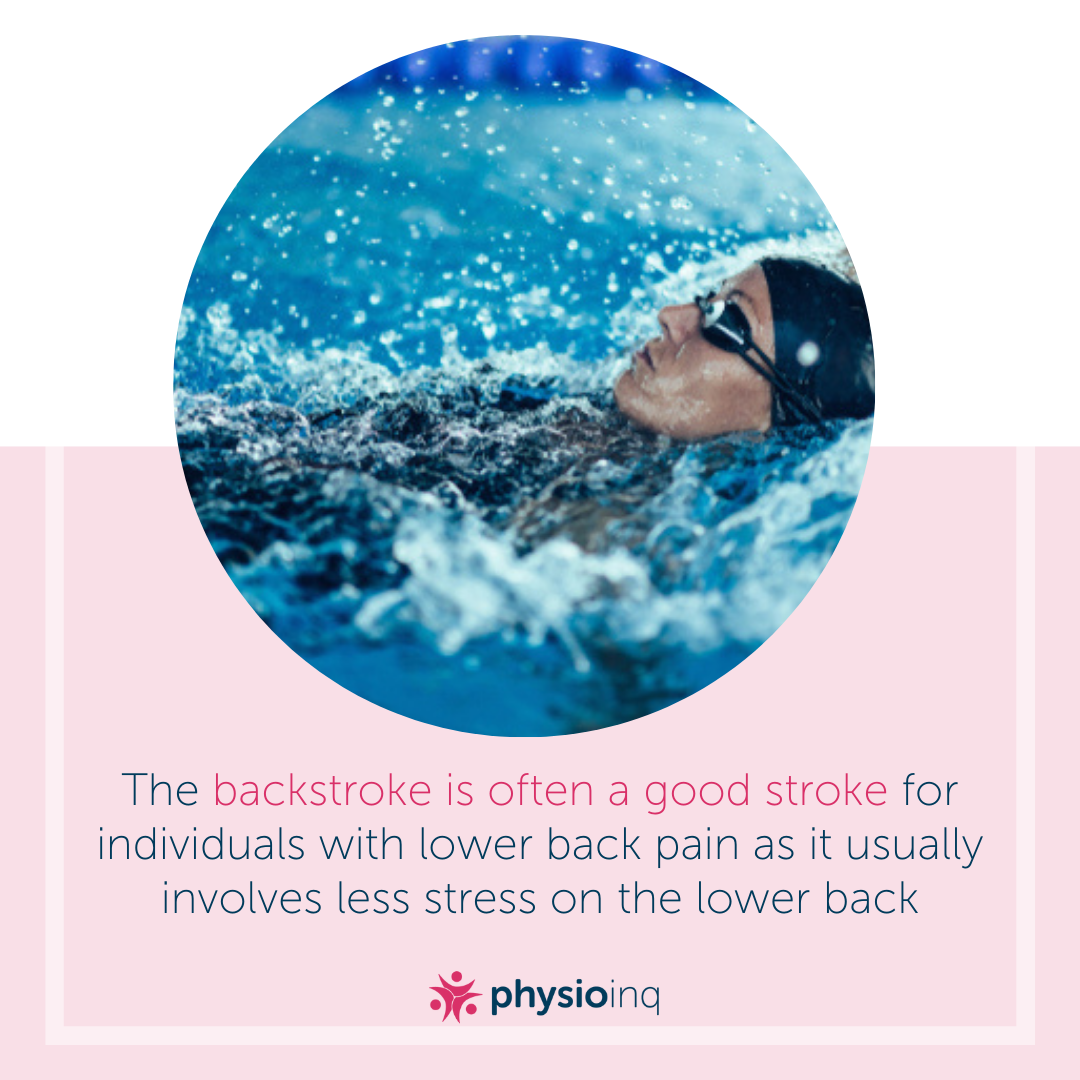
What Swimming Technique Helps Lower Back Pain?
Core Engagement & Breathing
- Neutral Spine: Imagine a straight line from head to pelvis, keep your hips close to the surface.
- Controlled Breathing: Use rhythmic inhalation/exhalation to stabilise the trunk; consider a snorkel to avoid unnecessary neck extension.
Progression & Variety
- Start with Water Walking/Aerobics: For severe pain, begin in chest-deep water, walking or gentle jogging helps build confidence.
- Interval Training: Alternate 2–3 minutes of swimming with 1 minute of rest to prevent fatigue and preserve technique quality.
- Drills for Stability:
- Vertical Kicking: In deep water, kick in a vertical position with arms crossed to isolate core control.
- Single-Arm Backstroke: Stabilise one arm at your side to challenge rotational control.
Equipment & Support
- Flotation Belts: Can assist beginners or those with high fear of immersion, allowing focus on technique without fear of sinking.
- Fins & Paddles: Use sparingly; they increase resistance but may also force hyperextension if over-used.
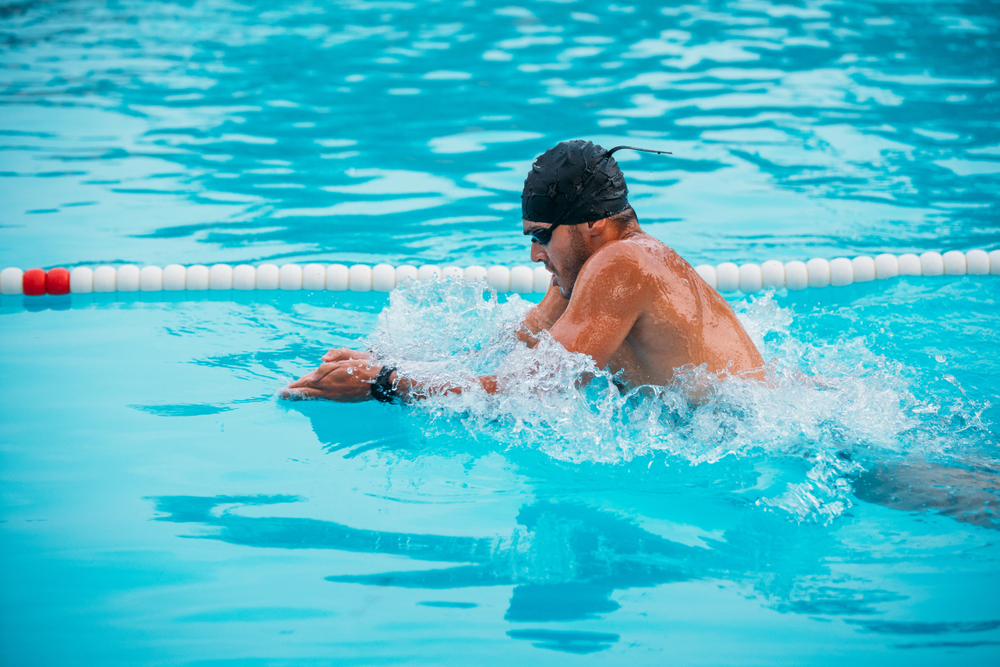
Why Does Swimming Help Back Pain?
Swimming helps with lower back pain because there isn’t another workout that provides the weightlessness of water, along with all the benefits it provides.
When your back aches, typically that means you have a lot of stiffness. Working your muscles in different ways in the water can increase the strength and flexibility of your muscles, and counteract the effects of a stiff back.
If you can, focus on engaging your core muscles while swimming which can have a positive effect on the posture and stability of your spine when outside the pool.
Here are a few more reasons swimming can be excellent for patients with lower back pain:
- Relaxes Your Nervous System: Tense muscles are sometimes what causes back pain. Swimming releases endorphins, the feel-good hormones, which relax your nervous system and tense muscles.
- Better Posture: As you strengthen muscle, add cardio and combat the effects of stiffness, your posture outside the pool will see positive gains.
- Relieves Pressure on Joints: Gravity can have a harsh effect on back pain and the buoyancy of water can give such relief to aching joints.
- Builds Muscle to Support Spine: Exercising in water supports your joints and spine while increasing resistance. Swimming engages muscles that you don’t always use, particularly those needed to improve your spine’s stability.
Can Swimming Make Back Pain Worse?
Occasionally, swimming can make lower back pain worse.
Swimming is not a one-size-fits-all solution for exercising with lower back pain. Each individual is different and their type of injury or back pain is unique, so what works for one may not work for another. Others may need to make certain accommodations to a swimming program based on their condition.
The key is to avoid positions that put your spine in a compromising position – for many, that means hyperextension. Also, following any workout be aware of soreness. Aches that dissipate within a few hours are okay but aches and pain that last into the following day are a sign you're probably doing too much.
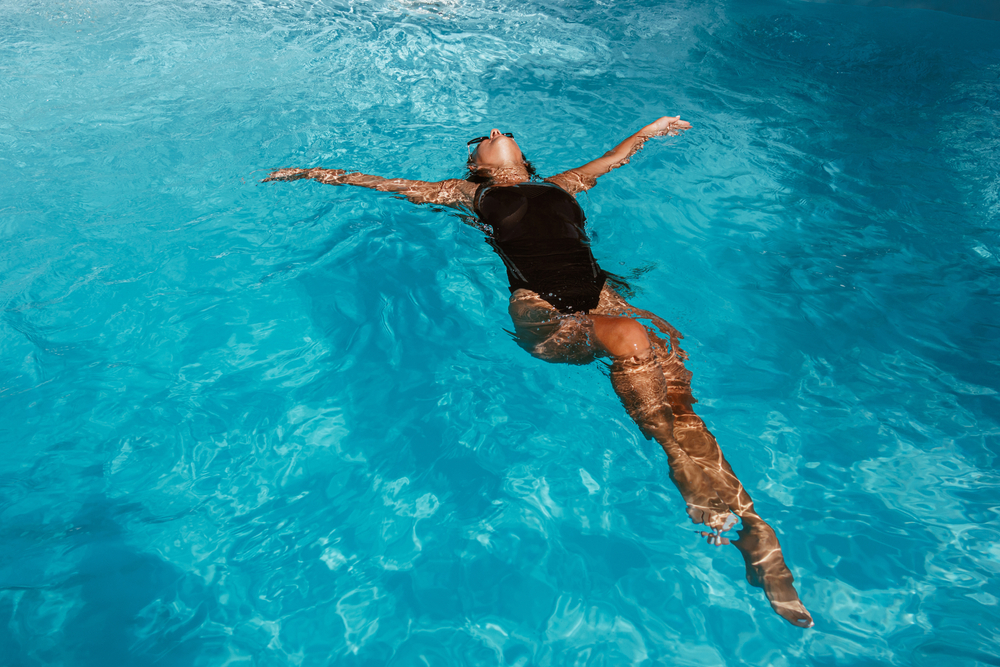
Frequently Asked Questions
Q: Can swimming worsen my back pain?
Yes, if you overdo high-extension strokes (butterfly), swim with poor alignment, or increase volume too quickly. Always monitor pain levels and adjust accordingly.
Q: How often should I swim for back pain relief?
Aim for 2–3 sessions per week, 20–30 minutes each, gradually increasing duration as tolerated. Consistency is more important than intensity.
Q: Do I need special facilities?
No, most 25 m or 50 m pools suffice. Warmer water (28–32 °C) is preferred for muscle relaxation. Hydrotherapy pools with adjustable currents can offer additional control.
Q: Who can guide my aquatic program?
An accredited physiotherapist or exercise physiologist trained in aquatic rehabilitation, such as those at Physio Inq, can design safe, progressive routines tailored to your back condition.
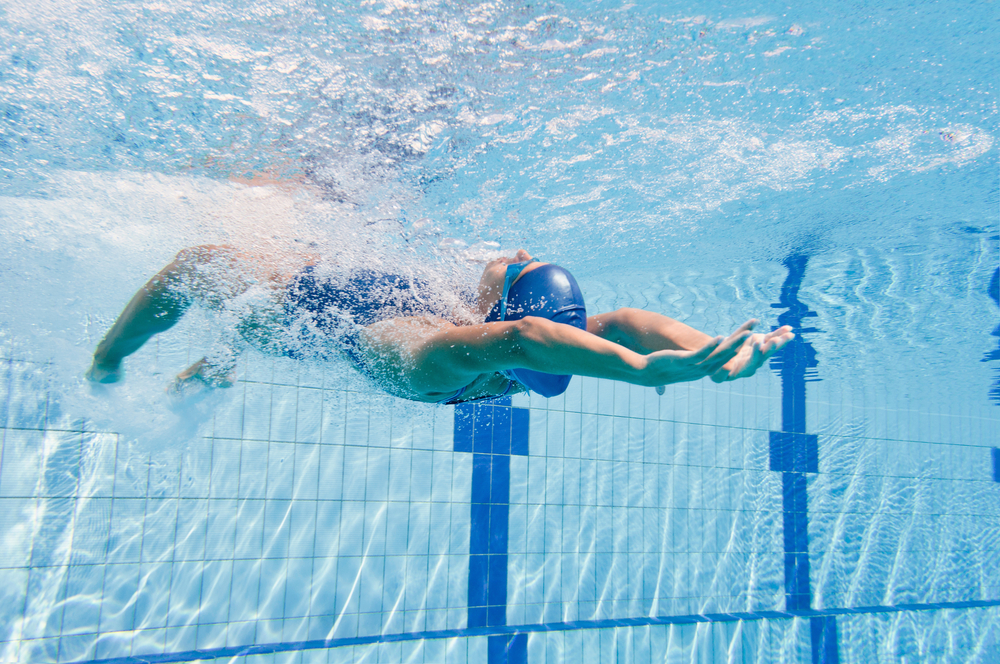
Swimming provides a unique, low-impact environment to strengthen supporting musculature, increase flexibility and reduce pain in lower back disorders. By selecting appropriate strokes, focusing on core stability and progressing under professional guidance, most people can safely incorporate aquatic exercise into their recovery toolkit.
Next Steps:
- Screen & Assess: Discuss your back pain with a GP or physiotherapist to confirm swimming is suitable.
- Book a Consultation: Arrange an in-home or in-clinic aquatic assessment with Physio Inq – Mobile Physiotherapy.
- Begin Gradually: Start with water walking or backstroke drills, following your therapist’s bespoke plan.
- Progress Safely: Increase session length and stroke variety only when pain-free for 48 hours post-swim.
Call 1300 731 733 or book online to dive into a personalised, research-backed aquatic program today.
Date Published: Sunday, June 12, 2022
Locate a Mobile Physiotherapy
Service Near me
Get the experience & convinence you deserve to support your or a loved one's allied health needs.
Our Mobile Physiotherapy team are currently serving & taking appointments in the following states and regions in Australia:
Need to get into direct contact with ur Client Services team? We're all ears. Call our team directly on 1300 731 733


